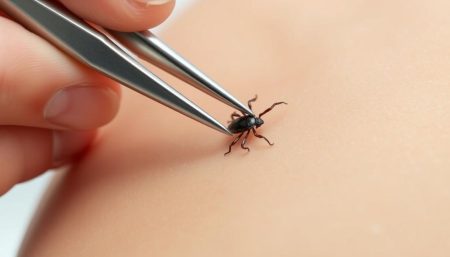Starting the journey of gender confirmation surgery is a big step. It’s important to know about male to female bottom surgery results. This guide will help you understand the physical and emotional changes you might see.
Gender confirmation surgery is a key moment for those seeking to match their body with their true self. The outcomes of male to female bottom surgery can be life-changing. They affect how you look and how you feel, improving your overall life quality.
This detailed guide will cover the surgery, recovery, and long-term effects. We aim to give you accurate, helpful information. This way, you can make informed choices about your gender affirmation journey.
Understanding Male to Female Bottom Surgery Results
Male to female bottom surgery, or vaginoplasty, is a detailed procedure. It has many outcomes, including physical, functional, and emotional aspects. Each person’s results can vary.
Defining Surgical Success Criteria
Success in vaginoplasty is based on several factors:
- Creating a working neovagina
- Looking good and matching what the patient wants
- Having few complications and quick recovery
- Feeling better and more like themselves
Doctors and patients set clear goals and expectations before surgery.
Expected Aesthetic Outcomes
Vaginoplasty tries to make the outside genitals look like a cisgender female’s. This includes:
- A natural-looking vulva with labia and clitoral hood
- The urethra in the right spot
- Scars that are barely noticeable
Results can change based on the person’s body and the surgery method.
Functional Results Overview
Functional outcomes of vaginoplasty cover:
- Being able to have penetrative sex
- Feeling sensations and possibly having orgasms
- Using the bathroom without problems
Most people are happy with how things work, but everyone is different. Getting regular check-ups is key for the best results.
The Journey to Gender Confirmation Surgery
Starting a gender affirmation journey is deeply personal. For those aiming for a transfeminine transition, the road to gender confirmation surgery has key steps. It often begins with self-reflection and support from mental health experts.
First, you meet with healthcare providers. This is when medical steps start, like hormone therapy and voice training. As you move forward, you work with surgeons to plan your surgery.
Before surgery, you need to meet certain requirements. These include:
- Mental health evaluations
- Physical health assessments
- Hormone therapy for a set time
- Living as your affirmed gender full-time
The journey includes facial feminization surgeries and breast augmentation before bottom surgery. Each step has its own challenges and victories, helping your overall well-being.
“My gender affirmation journey was a transformative experience that allowed me to feel at home in my own body.”
Support from family, friends, and the LGBTQ+ community is vital. Many find strength in connecting with others who understand their journey.
| Stage | Duration | Key Activities |
|---|---|---|
| Self-Discovery | Varies | Introspection, Research, Seeking Support |
| Medical Consultation | 3-6 months | Doctor Visits, Mental Health Evaluations |
| Hormone Therapy | 1-2 years | Regular Check-ups, Dosage Adjustments |
| Pre-Surgical Preparation | 6-12 months | Surgeon Consultations, Health Assessments |
Types of Vaginoplasty Procedures Available
Vaginoplasty is a key step in genital reconstruction for many transgender women. It creates a functional vagina and external genitalia. Doctors use several techniques, each with its own benefits.
Penile Inversion Technique
The penile inversion technique is the most common vaginoplasty. It uses the penis’s skin to make the vaginal canal. Surgeons also use scrotal skin for the labia. This method often gives good depth and sensation.
Sigmoid Colon Vaginoplasty
Doctors may suggest sigmoid colon vaginoplasty for some patients. This method uses a part of the large intestine for the vaginal canal. It’s good for those without enough penile skin. The colon tissue also provides natural lubrication, which many find beneficial.
Peritoneal Pull-Through Method
The peritoneal pull-through method is a newer technique. It uses the peritoneum, the lining of the abdominal cavity, to form the vaginal canal. This method can result in a self-lubricating vagina with good depth. It’s gaining popularity due to its promising outcomes and lower risk of complications.
Each vaginoplasty technique has its pros and cons. The best choice depends on a person’s body, health, and goals. A skilled surgeon can help patients decide which method is right for them.
Pre-Surgery Preparation and Requirements
Getting ready for gender confirmation surgery is a big step in the journey for those transitioning. It involves several important steps to get the best results and a quick recovery.
Hormone therapy is key in preparing the body for surgery. Most surgeons want patients to do hormone therapy for at least 12 months before surgery. This helps grow breast tissue and soften the skin, making the appearance more feminine.
Removing hair is also a must. For the genital area, methods like electrolysis or laser treatments are best. These take months to do, so starting early is important.
To get the best results from surgery, making lifestyle changes is needed. Patients are often told to:
- Stop smoking at least 6 weeks before surgery
- Eat healthy and exercise regularly
- Avoid certain medicines and supplements
- Plan for care and support after surgery
Getting a mental health check is also a must for surgery. These checks make sure patients are mentally ready for the transition and have the right expectations about the results.
| Preparation Step | Typical Timeline | Importance |
|---|---|---|
| Hormone Therapy | 12+ months | High |
| Hair Removal | 6-12 months | High |
| Mental Health Evaluation | 1-3 months | Essential |
| Lifestyle Adjustments | 3-6 months | Medium |
By fully preparing for gender confirmation surgery, patients can greatly improve their chances of good results and a quick recovery.
Immediate Post-Operative Expectations
Right after you wake up from anesthesia, your post-op recovery starts. Knowing what to expect can make you feel more at ease. It helps you get ready for the healing journey ahead.
Hospital Recovery Period
You’ll likely stay in the hospital for 5-7 days after surgery. Medical staff will watch your vital signs and manage your pain closely. Resting in bed is key in these early days to help your body heal.
Initial Healing Phases
The first weeks are very important for healing. You might feel swollen and uncomfortable, but that’s okay. It’s good to start walking gently to keep blood flowing. But, don’t do too much and always follow your surgeon’s advice for the best results.
Pain Management Protocols
Your doctors will create a pain plan just for you. This might include pills and shots to help with pain. As you get better, the pain should lessen, and you can switch to over-the-counter pain meds.
- Use ice packs to reduce swelling
- Take prescribed medications as directed
- Report any unusual pain or symptoms to your doctor
Keep in mind, everyone heals differently. Stay in touch with your healthcare team during recovery. This way, you’ll get the best results from your MTF surgery.
Male to Female Bottom Surgery Results: Timeline and Stages
Knowing the timeline of male to female bottom surgery results is key for those thinking about or going through it. The healing process has clear stages, each with its own healing and adjustment milestones.
The first recovery phase lasts 4-6 weeks after surgery. During this time, patients focus on healing wounds and managing pain. Swelling and bruising are common and lessen as time goes on. Most people can start with light activities around week 4.
Months 2-3 are a big change in transgender surgery outcomes. Feeling starts to come back, but it might feel different or more intense. Patients start doing more dilation to keep the vagina the right size. By month 3, many can go back to work and daily life with fewer limits.
| Timeline | Physical Changes | Functional Progress |
|---|---|---|
| 1-4 Weeks | Significant swelling, bruising | Limited mobility, wound care focus |
| 1-3 Months | Decreased swelling, scar softening | Increased sensation, dilation routines |
| 3-6 Months | Further refinement of aesthetics | Improved comfort, sexual function exploration |
| 6-12 Months | Near-final appearance | Enhanced sensation, sexual satisfaction |
Results keep getting better over 6-12 months. Scars get less noticeable, feeling improves, and the look gets more polished. Many feel more comfortable and happy with their bodies during this time, showing big progress in their journey.
Physical Appearance After Surgery
Gender confirmation surgery changes a person’s body a lot. The results of male to female bottom surgery differ for each person. This part talks about how the body looks after surgery, scars, and how it looks in the long run.
External Aesthetics
The neo-vagina made during surgery looks like a cisgender female’s. Surgeons work hard to make the labia, clitoris, and vaginal opening look natural. Many are happy with how their genitals look after they heal.
Scar Formation and Healing
Scars are a part of surgery. In male to female bottom surgery, scars are around the vaginal opening and labia. With time, these scars get less visible. Taking good care of the body after surgery helps scars not show as much.
Long-term Cosmetic Results
The neo-vagina’s look changes over months after surgery. Swelling goes down, tissues settle, and scars fade. Most people see their desired look within a year after surgery. Seeing a surgeon regularly helps with any concerns about how things look.
| Time Post-Surgery | Typical Aesthetic Changes |
|---|---|
| 1-3 months | Significant swelling, visible scars |
| 3-6 months | Reduced swelling, scars beginning to fade |
| 6-12 months | Final shape emerging, scars less noticeable |
| 1 year+ | Stable appearance, well-healed scars |
Knowing about these changes helps set realistic hopes for those thinking about surgery. Everyone’s experience with the neo-vagina is different. But many feel it matches their gender identity and goals.
Sensory Changes and Sensation Recovery
MTF surgical procedures lead to big changes in how we feel. After bottom surgery, people start to notice new sensations as their bodies adjust. It takes time for feeling to come back in the genital area, and it’s different for everyone.
Feeling comes back in steps. Right after surgery, the area might feel numb. Then, over time, people feel tingling, warmth, and more clear touch. It can take up to two years for full feeling to return.
The clitoris, made during vaginoplasty, becomes a new spot that feels good. Many find this area more sensitive as nerves heal. The vaginal canal might feel less at first but gets more sensitive with time.
| Time Post-Surgery | Typical Sensations |
|---|---|
| 0-3 months | Numbness, tingling |
| 3-6 months | Increased sensitivity, pressure awareness |
| 6-12 months | Developing erogenous zones, temperature sensitivity |
| 1-2 years | Refinement of sensations, possible orgasmic response |
How people feel after transgender surgery can vary. Some have intense orgasms, while others feel more gentle pleasure. Taking good care of yourself after surgery and following your doctor’s advice can help improve how you feel and enjoy your results.
Post-Surgery Care and Maintenance
After male to female bottom surgery, you need to take good care of yourself. This ensures your neo-vagina heals well and you’re happy with the results. Here’s what you need to know about post-surgical care.
Dilation Schedule
Dilation is key to keeping your neo-vagina the right size. Your surgeon will give you a custom plan. You’ll start with more frequent dilations and then do them less often as time goes on.
| Time Period | Frequency | Duration |
|---|---|---|
| Week 1-4 | 3-4 times daily | 15-20 minutes |
| Month 2-3 | 2-3 times daily | 20-30 minutes |
| Month 4-6 | 1-2 times daily | 30-45 minutes |
| After 6 months | 3-4 times weekly | 45-60 minutes |
Hygiene Protocols
Keeping clean is important to avoid infections and make recovery smoother. Use mild, unscented soap and warm water to clean the area. Pat dry with a clean towel and stay away from harsh chemicals or douching.
Long-term Maintenance
Long-term care means regular doctor visits, sticking to your dilation plan, and watching for any changes. Many people find their neo-vagina experiences rewarding with the right care. This can greatly improve your life and sex life.
Potential Complications and Risk Factors
Male to female bottom surgery results can vary. It’s key to know about possible complications. While most transgender surgery outcomes are good, there are risks to be aware of.
Common issues include bleeding, infection, and slow healing. Some might face urinary problems or loss of feeling. Rarely, fistulas or tissue death can happen.
To lower risks, follow pre-op instructions well and stay healthy. Choosing an experienced surgeon is vital for the best results.
| Complication | Incidence Rate | Prevention Strategies |
|---|---|---|
| Bleeding | 5-10% | Avoid blood thinners, follow post-op care |
| Infection | 2-5% | Proper hygiene, antibiotics as prescribed |
| Wound Dehiscence | 1-3% | Avoid strenuous activity, follow dressing changes |
| Urinary Issues | 3-7% | Pelvic floor exercises, proper catheter care |
Knowing these complications helps patients make better choices for their surgery. It ensures the best possible results.
Sexual Function and Satisfaction Rates
Gender confirmation surgery is a big step in the journey for many. People often ask about their sex life after the surgery.
Physical Intimacy Timeline
Starting physical intimacy again takes time. Doctors usually say wait 6-8 weeks before sex. This helps the body heal and avoids problems.
Pleasure and Sensitivity
As healing goes on, people feel more sensitive in their new genitals. The clitoris, made from penile tissue, keeps nerve endings for pleasure. Some feel orgasms in 3-4 months, while others take longer.
Patient Satisfaction Studies
Studies show most patients are happy with their surgery. A 2018 study found 94% of people felt better about their lives after surgery. Sexual happiness rates are about 70-80%.
| Aspect | Satisfaction Rate |
|---|---|
| Overall Quality of Life | 94% |
| Sexual Satisfaction | 70-80% |
Even though everyone’s experience is different, many feel more at ease and proud of their bodies after surgery. This often leads to better sex lives and overall happiness with their transition.
Long-term Health Considerations
MTF surgical procedures are a big step in a person’s gender affirmation journey. But, the journey doesn’t stop after surgery. Taking care of your health long-term is key to keeping results good and feeling well.
It’s important to see doctors regularly after MTF surgery. These visits help doctors check on healing, answer questions, and spot problems early. You should see a primary care doctor and the surgeon who did your surgery every year.
Some people might need more surgeries or changes to their care. This could be to make things look or work better. Always talk to a doctor who knows about gender-affirming care if you have any worries.
- Monitor hormone levels regularly
- Practice proper hygiene and dilation techniques
- Stay vigilant for signs of infection or complications
- Maintain a healthy lifestyle with balanced nutrition and exercise
Don’t forget about your mental health in your care plan. The journey to affirm your gender can be tough emotionally. Getting help from mental health experts and joining support groups can really help.
By focusing on long-term health care, you can make sure your MTF surgery works well. And you can keep thriving in your affirmed gender identity.
Psychological Impact and Quality of Life
Gender confirmation surgery is a big step in the journey of a transfeminine person. It often leads to better mental health and a higher quality of life.
Mental Health Outcomes
Research shows that many people feel less gender dysphoria and better mentally after surgery. They see a drop in depression and anxiety. At the same time, their self-esteem and body satisfaction go up.
Social Integration
After surgery, many feel more at ease in social settings. They feel their body matches their gender identity. This boosts their confidence in public and at work.
Relationship Dynamics
Gender confirmation surgery can change personal relationships. Some people find better intimacy with their partners. Others might face new challenges in relationships. It’s key to have open talks and support from loved ones during this time.
| Aspect | Pre-Surgery | Post-Surgery |
|---|---|---|
| Gender Dysphoria | High | Significantly Reduced |
| Self-Esteem | Often Low | Improved |
| Social Comfort | Varied | Generally Increased |
| Relationship Satisfaction | Varied | Often Improved |
While surgery can bring many benefits, it’s not a complete fix. It’s important to keep up with support, therapy, and self-care. These are key for a successful transition and overall well-being.
Recovery Milestones and Timeline
Knowing the post-op recovery timeline for male to female bottom surgery is key. This journey includes physical healing, emotional adjustment, and reaching functional milestones. Let’s look at the main recovery stages.
The first weeks after surgery are all about physical healing. Patients usually stay in the hospital for 5-7 days. They manage pain and learn basic care routines. Swelling and discomfort are common during this time.
By week 4, many can start doing light activities.
Emotional recovery is just as important. Patients may feel a mix of emotions, from excitement to anxiety. Support systems are vital in helping through these emotional changes.
Functional milestones differ for everyone. Most start dilation exercises around week 2. They gradually increase the frequency and duration. Sexual activity is usually possible after 8-12 weeks, but full sensation may take several months to develop.
| Time Frame | Physical Recovery | Functional Progress |
|---|---|---|
| 1-2 Weeks | Hospital stay, initial healing | Basic self-care, rest |
| 2-4 Weeks | Reduced swelling, improved mobility | Start dilation exercises |
| 1-3 Months | Scar healing, increased comfort | Return to work, light exercise |
| 3-6 Months | Continued healing, reduced sensitivity | Resume sexual activity, full dilation routine |
| 6-12 Months | Final aesthetic results visible | Increased sensation, emotional adjustment |
Remember, every person’s recovery is different. Being patient and following medical advice are essential for the best results from male to female bottom surgery.
Support Systems and Resources
male to female bottom surgery results Starting a gender affirmation journey needs a strong support network. People going through male to female bottom surgery find great help from others who understand. Online groups and local support meetups offer safe places to talk, share tips, and find emotional backing.
Mental health services are key for dealing with the ups and downs of transition. Many doctors offer counseling made for transgender patients. They help with feelings like anxiety and depression that might come up during surgery and recovery.
After bottom surgery, ongoing medical care is vital. Patients should find healthcare pros who know about transgender health. These experts can manage hormones, solve post-surgery issues, and provide ongoing support. Having a reliable medical team is important for the whole journey.
There are also educational and advocacy groups that help a lot. They offer workshops, books, and legal help for individuals and their families. These resources help people feel more confident and informed as they go through their transition.
FAQ
Q: What are the typical results of male to female bottom surgery?
A: Male to female bottom surgery creates a neo-vagina, labia, and clitoris. Most patients see a natural look. They can feel sexual pleasure and often have penetrative sex.
But, results can differ. It’s key to have realistic hopes.
Q: How long does it take to fully recover from vaginoplasty?
A: Recovery from vaginoplasty takes 6 to 12 months. The first 6-8 weeks are critical. Patients must follow strict care rules.
Sensation and sex function improve over months. Scar healing can take up to two years.
Q: What are the different types of vaginoplasty techniques available?
A: There are several vaginoplasty techniques. The most common is the penile inversion method. Other methods include sigmoid colon and peritoneal pull-through.
Each has its benefits and drawbacks. The right technique depends on the patient and should be discussed with a surgeon.
Q: What is the dilation schedule after male to female bottom surgery?
A: Dilation is key to keep the neo-vagina right. Start with 3-4 times a day for 15-20 minutes. The frequency goes down over time.
But, dilation is needed for life. The exact schedule depends on the surgeon and healing.
Q: What are the possible complications of male to female bottom surgery?
A: Complications include infection, bleeding, and wound issues. There’s also a risk of urinary problems and neo-vagina loss.
Rare but serious issues can harm nearby organs. Following care instructions can lower risks.
Q: How soon after surgery can sexual activity resume?
A: Wait 6 to 8 weeks before sex, including penetration. This time can vary. Always get the surgeon’s okay before starting.
Even with approval, start slow and use lubrication. Stop if there’s pain or discomfort.
Q: What kind of sensation can be expected in the neo-vagina?
A: Sensation in the neo-vagina grows over time. Many feel touch and pleasure. The clitoris, made from the penis, often keeps its sensitivity.
But, sensation varies. It may take up to 18 months to feel fully.
Q: Are there any long-term health considerations after male to female bottom surgery?
A: Long-term, keep the neo-vagina clean and dilate regularly. See healthcare providers often. Some may need minor fixes.
Continue hormone therapy and watch your health. This includes bone and heart health.
Q: How does male to female bottom surgery affect urinary function?
A: Surgery changes how you pee. The urethra is moved to a more feminine spot. Many adapt quickly, but some may notice changes in urine flow.
In rare cases, you might have trouble peeing or leak. These problems usually get better with time. But, talk to your surgeon if they don’t.
Q: What is the satisfaction rate among patients who undergo male to female bottom surgery?
A: Most patients are very happy with the results. Satisfaction rates are often over 90%. But, happiness depends on many things, like surgery success and personal experience.


















